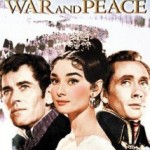 Hollywood pulled out all the stops for this 1956 drama based on literary master Tolstoy’s long historical drama written from 1865 to 1869, which weaves the invasion of the Russian Empire by the French army led by Napoleon in 1812 as the warp, and 500 characters including three Russian aristocratic families as the weft.
Hollywood pulled out all the stops for this 1956 drama based on literary master Tolstoy’s long historical drama written from 1865 to 1869, which weaves the invasion of the Russian Empire by the French army led by Napoleon in 1812 as the warp, and 500 characters including three Russian aristocratic families as the weft.
Omitting as much as possible of the lengthy book of four volumes, the movie mainly depicts the love entanglement of three people—Count Bezukhov’s illegitimate child Pierre (Henry Fonda), his closest friend Prince Andrei (Mel Ferrer), and the daughter of the Count Rostov family Natasha (Audrey Hepburn)—but it is still more than three hours long, and boring to watch. The feel of old Hollywood exudes from the screen, and makes me wonder where Russia’s 19th century countryside has gone. However, I think what destroyed this movie was—sorry to her fans—Audrey Hepburn’s poor performance.
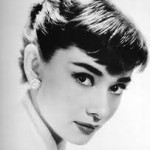 Audrey Hepburn was a bit too old to play Natasha—who is like a blossoming flower—but in order to exhibit cuteness, Audrey just kept dancing around and tried to talk cutely by using a high voice. In the original, Natasha meets Prince Andrei in the vast countryside of Russia, but in the movie, the two meet at a boring ball; Natasha, who is sulking because she has not been asked to dance, becomes ecstatic when Prince Andrei asks her to dance, and she even says she wants to marry Prince Andrei. After Prince Andrei leaves for the frontline, Natasha is easily seduced by Anatole—the older brother of Pierre’s wife Helene—and they make plans to elope. In the end, after losing both Prince Andrei and Anatole, Natasha quickly snags Pierre—“tee hee hee”—when he appears before her again, and then the movie ends. Because Henry Fonda is too handsome to play Pierre, the movie makes me wonder why Natasha would ignore this handsome Pierre when he was around. I hope that the original work actually has a more profound tone of, “Due to her youth, Natasha hasn’t yet realized her own charm, nor understands what is important in life. However, she discovers the meaning of life by overcoming the difficulties of war and helping people across social classes; she grows into a strong and beautiful woman; and she realizes the true nature of Pierre’s heart, which she hadn’t noticed before; thus a love sprouts.” Otherwise, why would Tolstoy’s original work remain as a timeless masterpiece? However, this Hollywood movie is unfortunately very superficial.
Audrey Hepburn was a bit too old to play Natasha—who is like a blossoming flower—but in order to exhibit cuteness, Audrey just kept dancing around and tried to talk cutely by using a high voice. In the original, Natasha meets Prince Andrei in the vast countryside of Russia, but in the movie, the two meet at a boring ball; Natasha, who is sulking because she has not been asked to dance, becomes ecstatic when Prince Andrei asks her to dance, and she even says she wants to marry Prince Andrei. After Prince Andrei leaves for the frontline, Natasha is easily seduced by Anatole—the older brother of Pierre’s wife Helene—and they make plans to elope. In the end, after losing both Prince Andrei and Anatole, Natasha quickly snags Pierre—“tee hee hee”—when he appears before her again, and then the movie ends. Because Henry Fonda is too handsome to play Pierre, the movie makes me wonder why Natasha would ignore this handsome Pierre when he was around. I hope that the original work actually has a more profound tone of, “Due to her youth, Natasha hasn’t yet realized her own charm, nor understands what is important in life. However, she discovers the meaning of life by overcoming the difficulties of war and helping people across social classes; she grows into a strong and beautiful woman; and she realizes the true nature of Pierre’s heart, which she hadn’t noticed before; thus a love sprouts.” Otherwise, why would Tolstoy’s original work remain as a timeless masterpiece? However, this Hollywood movie is unfortunately very superficial.
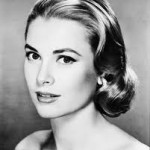 Digressing from the main subject, I once heard a male American student express that there are three actresses who symbolize the charms of women. According to him, the three actresses are Grace Kelly (beauty), Marilyn Monroe (sexiness), and Audrey Hepburn (cuteness); the other men listening to this strongly agreed.
Digressing from the main subject, I once heard a male American student express that there are three actresses who symbolize the charms of women. According to him, the three actresses are Grace Kelly (beauty), Marilyn Monroe (sexiness), and Audrey Hepburn (cuteness); the other men listening to this strongly agreed. 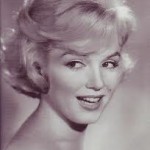 These three actresses are aptly of the same generation, and Grace Kelly and Audrey Hepburn are the same age; Marilyn Monroe is three years older than the other two. Other women of the same generation who are also synonymous with “beautiful woman” in those days include Elizabeth Taylor (three years younger than those two), the president’s wife Jacqueline Kennedy (the same age as those two!!!), and gorgeous Sophia Loren (five years younger than those two).
These three actresses are aptly of the same generation, and Grace Kelly and Audrey Hepburn are the same age; Marilyn Monroe is three years older than the other two. Other women of the same generation who are also synonymous with “beautiful woman” in those days include Elizabeth Taylor (three years younger than those two), the president’s wife Jacqueline Kennedy (the same age as those two!!!), and gorgeous Sophia Loren (five years younger than those two). 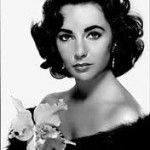 If Elizabeth Taylor symbolizes a vulnerable heart, Jacqueline Kennedy power, and Sophia Loren vitality, perhaps these six sparkling women of the same generation express the charm of a woman from different angles.
If Elizabeth Taylor symbolizes a vulnerable heart, Jacqueline Kennedy power, and Sophia Loren vitality, perhaps these six sparkling women of the same generation express the charm of a woman from different angles.
I heard an interesting story regarding Grace Kelly and Jacqueline Kennedy. It seems that the two happened to attend the same dinner party. 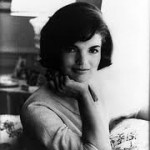 Wherever Grace Kelly went, she was sure to attract men, but that night, all the men crowded around Jackie, and no man was interested in Grace. Grace was so distraught that she hid in the bathroom and cried all night long. I even think part of the reason she decided to marry the Prince of Monaco was the memory of this upsetting dinner party.
Wherever Grace Kelly went, she was sure to attract men, but that night, all the men crowded around Jackie, and no man was interested in Grace. Grace was so distraught that she hid in the bathroom and cried all night long. I even think part of the reason she decided to marry the Prince of Monaco was the memory of this upsetting dinner party.
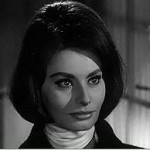 That story was a digression. All six of these women have passed away except Sophia Loren. Although I digressed from the War and Peace movie, the era of these six women was when Hollywood was robustly thriving after World War II; this movie may be considered a flashy flower that bloomed as a result of those times.
That story was a digression. All six of these women have passed away except Sophia Loren. Although I digressed from the War and Peace movie, the era of these six women was when Hollywood was robustly thriving after World War II; this movie may be considered a flashy flower that bloomed as a result of those times.
